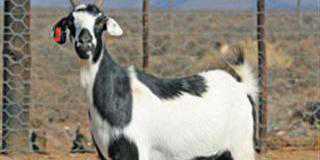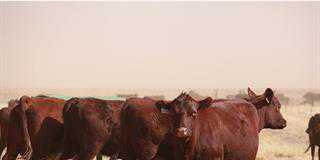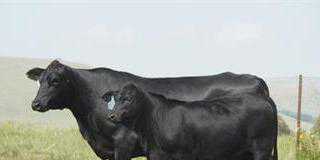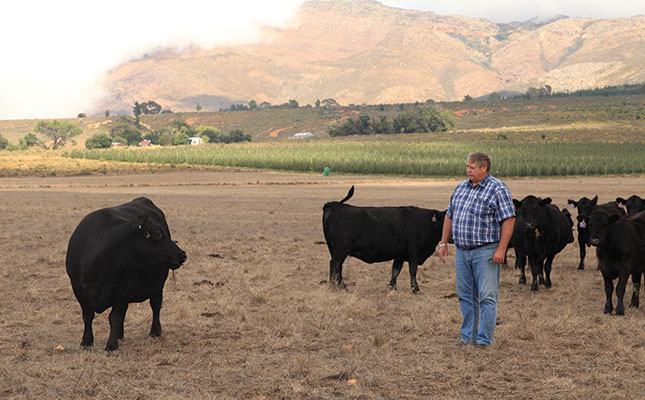
Photo: Glenneis Kriel
Conditions on Gielie Geldenhuys’s family farm in the Theronsberg region, 30km north of Ceres in the Western Cape, are harsh. Winters are cold, typically with snow, summers are hot, and the grazing comprises sourveld. Faced with these realities in the 1970s, Geldenhuys’s father, Basie, kept a variety of breeds on the farm to test which had the best chance of thriving. In the end, he settled on medium-framed Angus cattle.
“Despite being of British origin, Angus cattle have adapted well to South African production conditions,” says Geldenhuys. “Some Scottish farmers who visited us during the World Angus Tour in 2005 said they’d rather run away than try to produce cattle under our harsh conditions! They couldn’t believe what we’d achieved with these cattle on sourveld and with our low rainfall.”
In addition to this, the breed requires little supervision, thanks to its easy temperament, easy calving and fast growth. These traits, explains Geldenhuys, are essential on his busy mixed farm, where he produces pome fruit, nectarines, onions, and sheep and goats.
Yet another advantage of the Angus, he adds, is that the meat is in high demand, thanks to its marbling.
In the mid-1980s, after working on farms in the US for a couple of years, Geldenhuys decided to turn the family’s herd into a stud, which was registered as Rheeboksplaat Stud in 1989.
“While working on a number of Angus stud farms, I realised that it cost just as much to raise stud cattle as it did commercial animals, but stud cattle presented an additional revenue stream, as the cattle fetched better prices than on the meat market.”
Geldenhuys says that his stud is one of the oldest Angus studs in South Africa, and this has enabled him to build a superior genetic pool that is in strong demand, particularly in the Western Cape.
The stud is also significantly larger than average, which enables him to use stricter selection criteria.
“We used to keep about 180 female animals, but had to downscale to 120 because of drought over the past five years, which drove up feeding costs,” he says.
He selects for well-balanced animals with good fertility, growth, meat qualities and hardiness.
“It’s important to always consider the impact of the selection of one trait on another, as there’s always a trade-off.
“For example, cows should produce sufficient milk to satisfy their calves,
but this shouldn’t be at the cost of fertility.
“Cows are the moneymaking machines of a stud and a commercial cattle farm, so they have to produce offspring each year or they’ll eat into your profits.”
Hardiness
Geldenhuys participates in the performance testing of the Angus Society of South Africa (Angus SA), which is conducted by the Agricultural Research Council. After being weighed at birth and weaning, calves are scrutinised by the society before they are allowed to be incorporated into the stud or sold as stud animals.
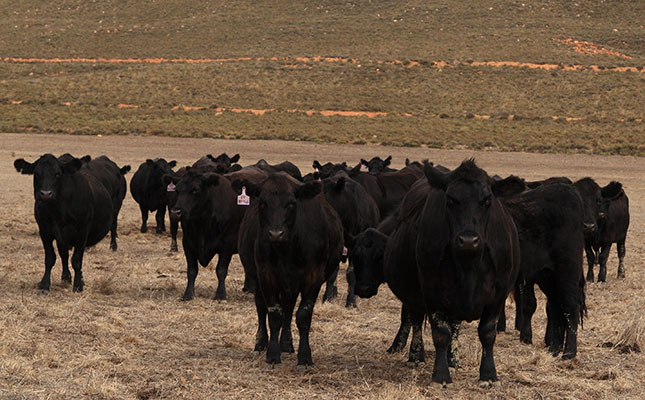
In addition, Geldenhuys has his own set of tests that the animals must pass to remain in the stud. The first is the harsh Theronsberg environment, which is his primary measure of whether the animals are hardy enough.
“They have to thrive on the farm with only the most essential of inputs. If they can’t, they’re out.”
For this reason, he weighs cows at weaning and again eight weeks later to see if they have put on weight. The bottom 5% of the animals are culled and sold to the meat market.
“We don’t sell these cows to other producers, because we want to eliminate their genetics from the South African gene pool,” he explains.
The same applies to cows that fail to conceive during the mating season, those who lose calves, or those who fail to produce healthy weaners, unless the failure was due to human error.
This strict selection means that cows can be culled after producing just two offspring, but at the other end of the scale are cows that are going strong at 16 to 18 years of age.
Breeding
In the past, explains Geldenhuys, all records had to be kept by hand, but the arrival of electronic scales and the use of the BeefPro management software package significantly eased record-keeping.
“When we started out, we had to post calf and production records to SA Stud Book and Angus SA; now, we do it by the mere push of a button. It also allows us to easily trace the parents of animals, whereas in the past we had to physically sift through files to do so.”
Sixty per cent of the bull genetics used in the stud are imported from tested sires in the US, while the rest come from Rheeboksplaat’s own tested bulls.
“I don’t use a computer program that shows me which animals to select. I prefer to scan through supplier catalogues to identify the genetics that’ll work best on our animals and under our production conditions,” he says.
Cows are synchronised and undergo artificial insemination (AI) in June.
This is done in one or two sessions (separated by a week or two), depending on the number of animals inseminated per day. Geldenhuys says it is difficult to inseminate more than 50 cows per day.
The success rate with AI is about 65%, and cows are placed with bulls 18 days after they have been inseminated to increase conception rates. The mating season runs for 90 days, otherwise the calving season becomes too drawn out, says Geldenhuys.
Heifers are not artificially inseminated; instead, they are mated naturally at around 16 months of age when they weigh about 350kg. To prevent calving complications, bulls are selected for their ability to produce calves with low birthweights. The heifers produce their first offspring at approximately two years of age.
Geldenhuys says that he tried embryo flushing on the farm, as it is meant to significantly boost genetic progress, but did not continue the practice. “It worked, but the cost doesn’t really justify the results for us.”
The calving season starts in mid-May, and calving takes place on the veld with no supervision.
The animals receive prescribed inoculations, but the area has very few diseases or parasite problems. Geldenhuys dips his animals only when really necessary, which works out to once every five years or so.
Feed flow
The breeding cycle is determined by the availability of feed on the farm. From May to July, when forage is limited, the cows are given oat hay to ensure they have sufficient milk for their calves.
“We produce oat hay in rotation with onions to prevent a build-up of diseases in the onion lands,” explains Geldenhuys.
The three months from August until October sees plentiful sourveld grazing, and weaning therefore takes place immediately after this period.
For the remainder of the season, animals receive a protein lick as well as mixed feed, depending on the cost and availability of the ingredients.
Young bulls are finished on a high-protein ration approximately 60 days before Geldenhuys holds his annual production sale. Each bull is tested by a veterinarian before the auction to ensure it is in good shape and carries no diseases.
Geldenhuys will host his 20th auction (the eighth on his farm) on 9 June. While buyers can bid via phone, most prefer to visit the farm and see the animals for themselves, says Geldenhuys.
“Our cattle are highly adaptable, and because they’re raised on sourveld, they’re suited to production across the country. Most of our buyers, however, come from the Western Cape, which is dominated by sourveld.”
Ideal for crossbreeding
For Geldenhuys, the production of stud animals gives him an opportunity to help the industry and individual farmers to advance.
“Angus cattle are not only great when produced as a single [pure] breed; they also [add superior] meat quality and growth when crossed with other breeds. Angus and Angus crosses are in high demand at feedlots and butcheries,” he says.
Asked if he ever had a favourite cow, he points out that he gave his favourite cow, along with another, to a friend who wanted to start a stud farm, with the agreement that the friend would supply him with all the male progeny.
The friend was lucky: the first offspring were all female animals, which allowed him to grow his stud. In fact, two of these offspring went on to win national champion status at the Bloem Show.
Geldenhuys was more than happy to help, recalling that he too had been assisted when he started out. The late Dr Jurie Geldenhuys of Hartbeesfontein in North West gave him some of the best Angus cattle from his Bonus Taurus Stud to help him accelerate the genetic progress of his stud.
“There’s a lot of potential to grow the industry, especially now that we’re able to export beef to overseas markets. We’ll be able to grow much faster if we help one another,” he says.
Geldenhuys admits that he considered selling the stud a few years back when he felt it had reached a high standard. However, when he asked his three sons (all farmers) whether any of them would be willing to take over the stud or if he should rather sell it, each volunteered to continue running the enterprise.
“Their reaction made me happy, as it means they understand the stud’s value and want to continue building this legacy.”
Email Gielie Geldenhuys at [email protected].









